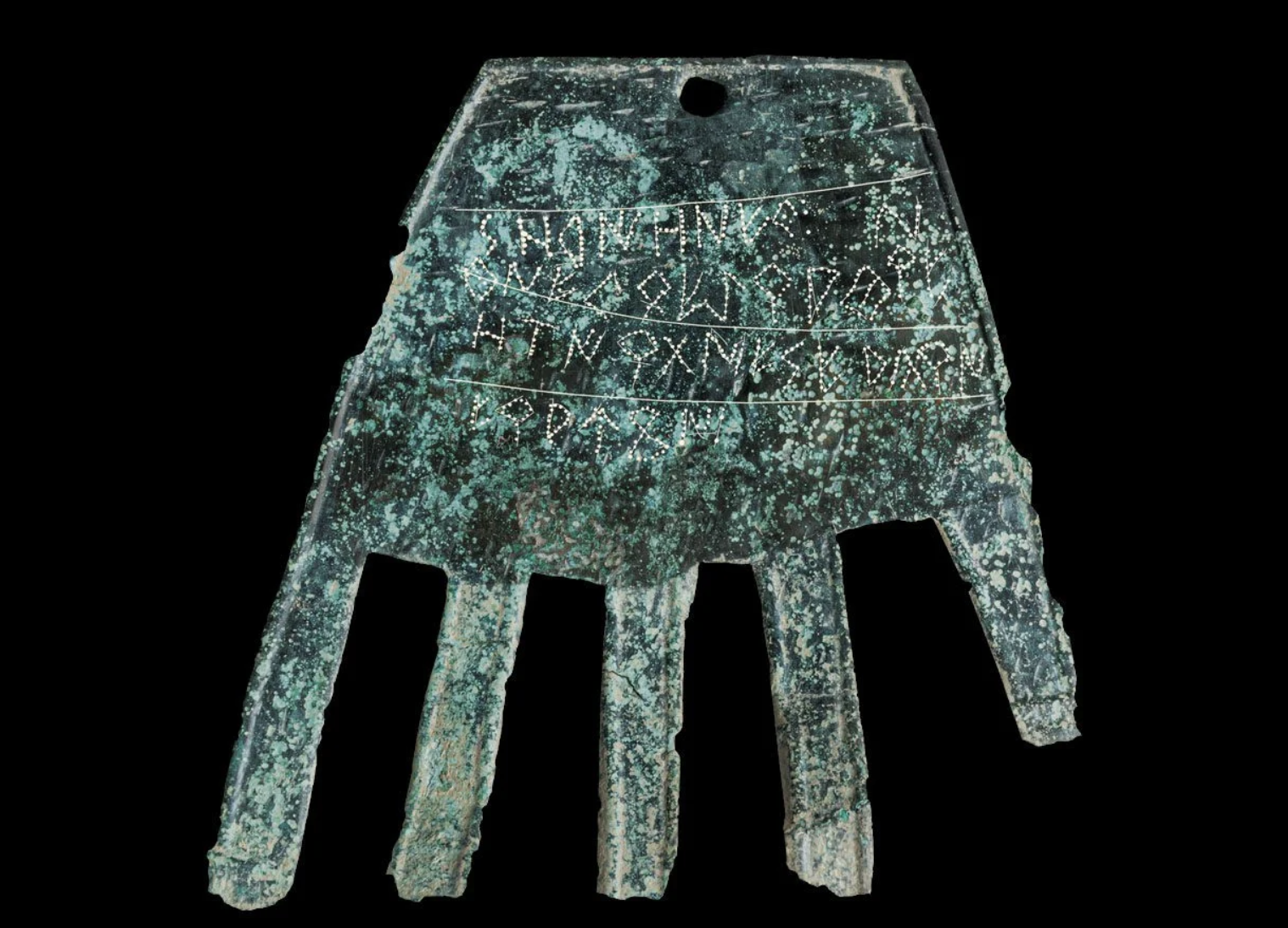The Oldest and Longest Vasconic Script found!
In a groundbreaking discovery, a recent study has shed light on the oldest and longest example of Vasconic script, unraveling the mysteries of an ancient relic known as the Hand of Irulegi. Unearthed during excavations in 2021 at the base of Castillo de IRULEGIko gaztelua near Pamplona, Spain, this 2100-year-old artifact dates back to the 1st century BC, a tumultuous period during the Roman Sertoria Wars.
Photo Credit: Antiquity Journal
Published in the journal Antiquity, the study reveals that the inscriptions on the hand are written in the Vasconic language, potentially linked to the present-day Basque language. This connection is strengthened by the identification of the Basque term for 'good fortune' on the artifact, suggesting its role as a good luck charm or dedication to a pre-Roman deity.
Basque, considered one of the last descendants of 'Palaeo-European' languages, predates the introduction of Indo-European languages during the Bronze Age by migrating people from the Eurasian Steppe. Mattin Aiestaran, the lead author of the study, notes, “The Irulegi hand is the only long written text retrieved to date, alongside several coins minted in the Vasconic territory.” However, the lack of other comparative texts makes it challenging to establish a direct link between the Vasconic language spoken at Irulegi and the modern Basque language.
Despite being the sole long Vasconic text discovered thus far, the presence of a word close enough to Basque suggests a 'cognate,' indicating a potential linguistic link. Aiestaran emphasizes that the Hand of Irulegi should be viewed as an integral element within the cultural context of the settlement, potentially serving a ritual function, such as attracting good luck or offering homage to an indigenous god or goddess of fortune.
Mikel Edeso Egia from the Aranzadi Science Society concludes, "The discovery of the Hand of Irulegi has opened a new horizon to unravel the history behind the most enigmatic language still alive in Europe: the Basque language." This archaeological find not only offers insights into the linguistic evolution of the region but also adds a fascinating chapter to the rich tapestry of European history.
